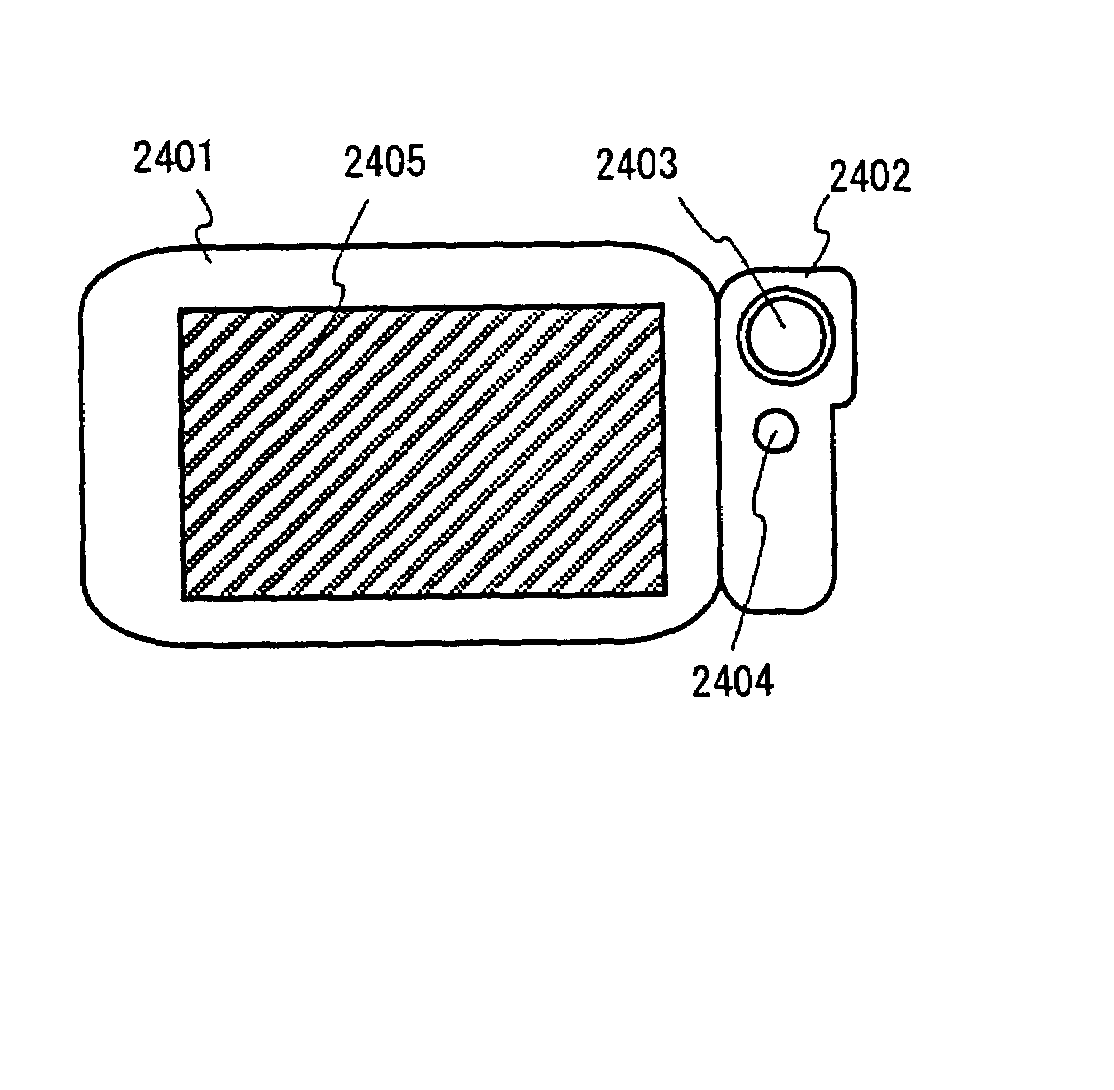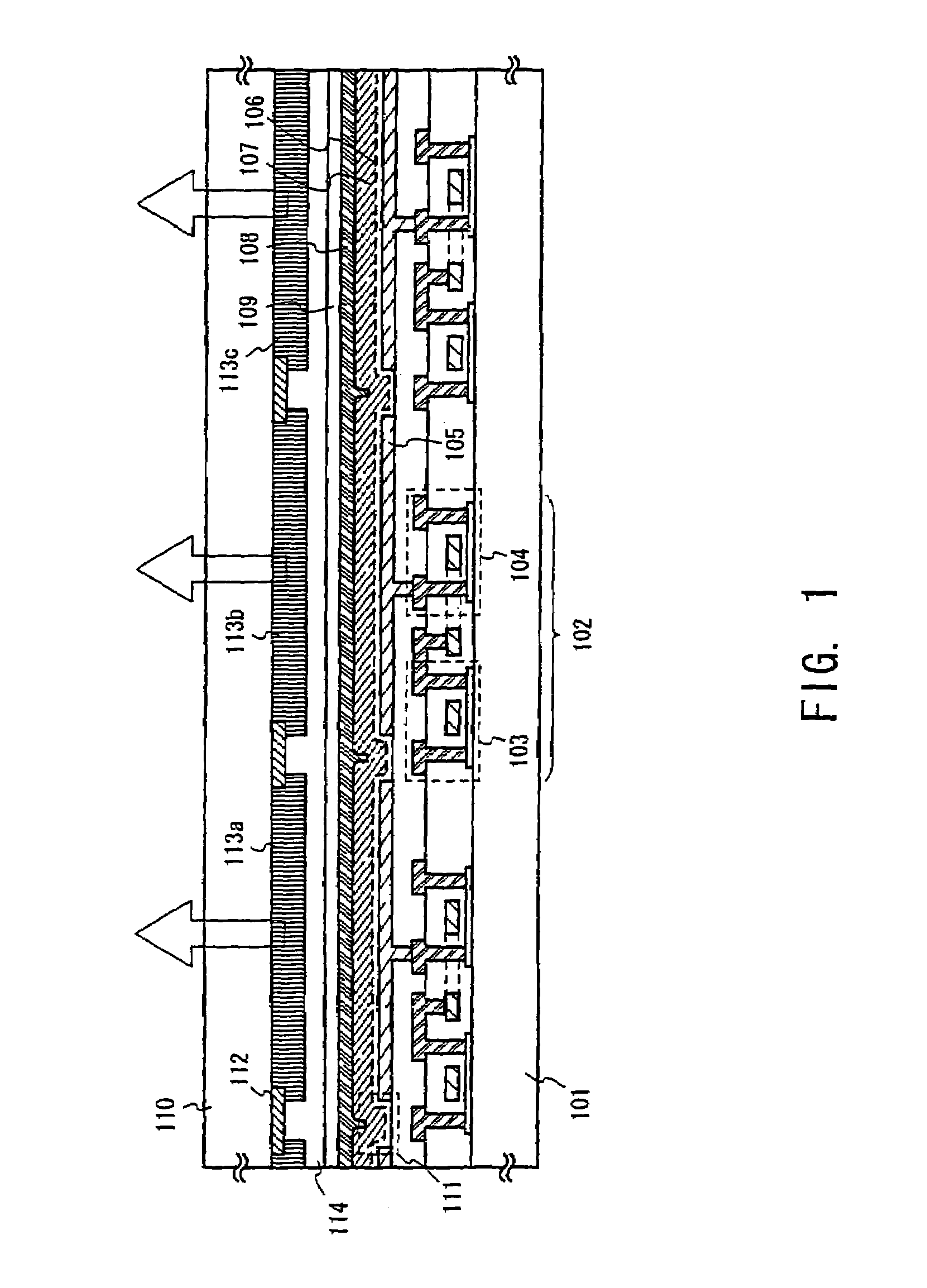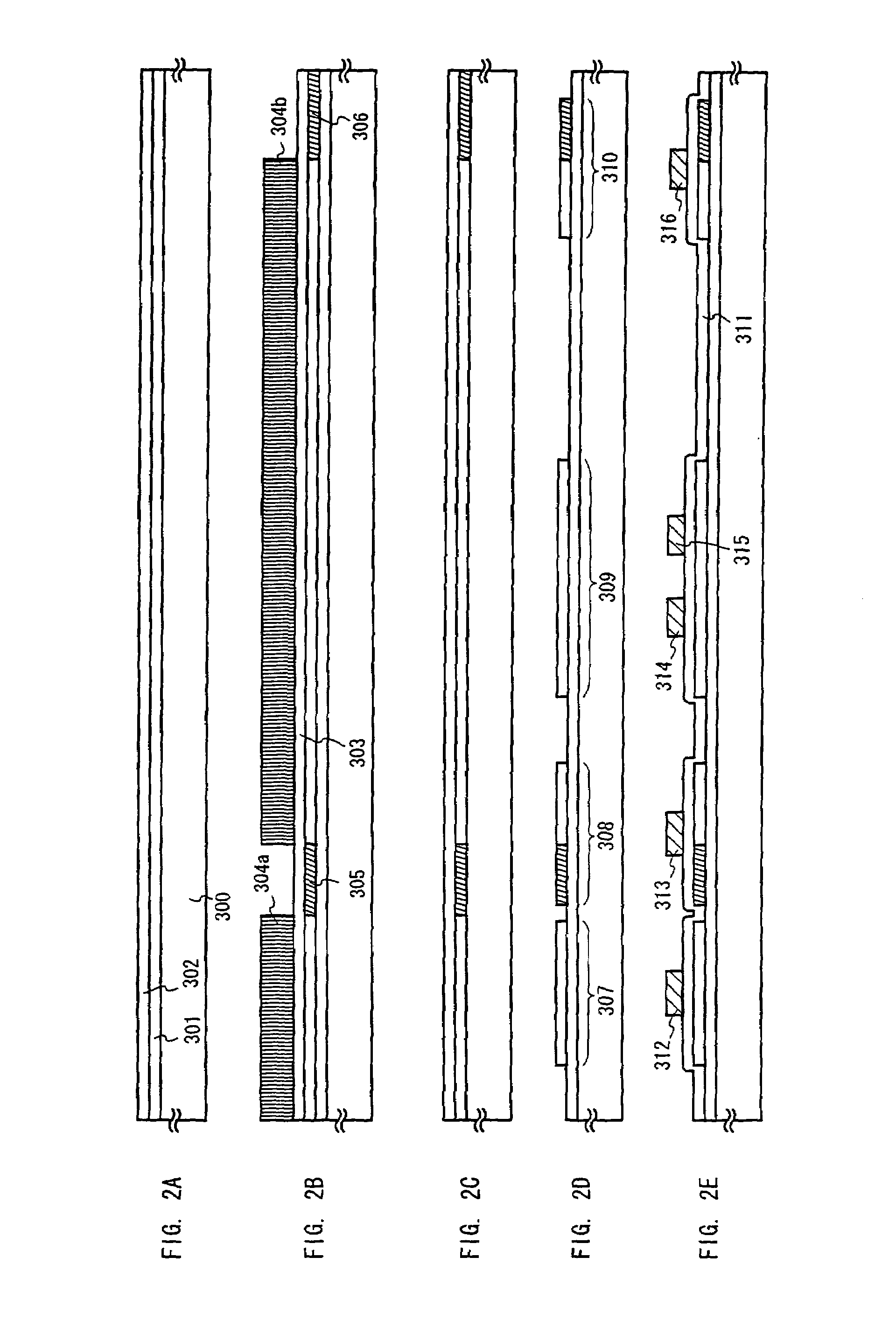EL display device utilizing light-emitting organic compounds and method for forming the same
a technology of organic compounds and display devices, which is applied in the field of el display devices utilizing light-emitting organic compounds and method for forming the same, can solve the problems of increasing current flow, increasing the amount of heat generation, and reducing the resistance value of the light-emitting layer, so as to prevent the deterioration caused by unnecessary heat generation and high reliability. , the effect of high reliability
- Summary
- Abstract
- Description
- Claims
- Application Information
AI Technical Summary
Benefits of technology
Problems solved by technology
Method used
Image
Examples
embodiment 1
[0074]A first embodiment of the invention is described here. A description will be made here on a method for fabricating TFTs of a pixel portion and driving circuit portions provided around the same simultaneously. For simplicity of the description, only a CMOS circuit is shown which is a basic circuit for such driving circuits.
[0075]First, as shown in FIG. 2A, an base film 301 having a thickness of 300 nm is formed on a glass substrate 300. In the present embodiment, the a silicon oxinitride film is laminated as the base film 302. At this time, the density of nitrogen in the region in contact with the glass substrate 300 is preferably in the range from 10 to 25 wt %.
[0076]Next, an amorphous silicon film (not shown) having a thickness of 50 nm is formed on the base film 301 using a known film forming method. The film is not limited to an amorphous silicon film, and it may be any semiconductor film (and any microcrystalline semiconductor film) including an amorphous structure. The fi...
embodiment 2
[0144]In the present embodiment, the case where the present invention is applied to a simple-matrix type EL display device will be described with reference to FIG. 7. In FIG. 7, reference numeral 701 denotes a plastic substrate, 702 denotes a cathode made of a layered structure including an aluminum film and a lithium fluoride film (more specifically, the lithium fluoride film is provided so as to be in contact with the EL layer). In the present embodiment, the cathode 702 is formed by the vapor deposition method. Although not illustrated in FIG. 7, a plurality of the cathodes are arranged in stripes along in a direction perpendicular to the drawing sheet.
[0145]On the cathode 702, an EL layer 703 (only including a light-emitting layer) made of a high-molecular type EL compound is formed by the printing method. In the present embodiment, PVK (polyvinylcarbazole), Bu-PBD (2-(4′-tert-butyl phenyl)-5-(4″-biphenyl)-1,3,4-oxydiazole), coumarin6, DCM1 (4-dicyanomethylene-2-methyl-6-p-dimet...
embodiment 3
[0153]The EL display device fabricated in accordance with the present invention is of the self-emission type, and thus exhibits more excellent recognizability of the displayed image in a light place as compared to the liquid crystal display device. Furthermore, the EL display device has a wider viewing angle. Accordingly, the EL display device can be applied to a display portion in various electronic devices. For example, in order to view a TV program or the like on a large-sized screen, the EL display device in accordance with the present invention can be used as a display portion of an EL display (i.e., a display in which an EL display device is installed into a frame) having a diagonal size of 30 inches or larger (typically 40 inches or larger.)
[0154]The EL display includes all kinds of displays to be used for displaying information, such as a display for a personal computer, a display for receiving a TV broadcasting program, a display for advertisement display. Moreover, the EL ...
PUM
| Property | Measurement | Unit |
|---|---|---|
| volume resistivity | aaaaa | aaaaa |
| volume resistivity | aaaaa | aaaaa |
| volume resistivity | aaaaa | aaaaa |
Abstract
Description
Claims
Application Information
 Login to View More
Login to View More - R&D
- Intellectual Property
- Life Sciences
- Materials
- Tech Scout
- Unparalleled Data Quality
- Higher Quality Content
- 60% Fewer Hallucinations
Browse by: Latest US Patents, China's latest patents, Technical Efficacy Thesaurus, Application Domain, Technology Topic, Popular Technical Reports.
© 2025 PatSnap. All rights reserved.Legal|Privacy policy|Modern Slavery Act Transparency Statement|Sitemap|About US| Contact US: help@patsnap.com



